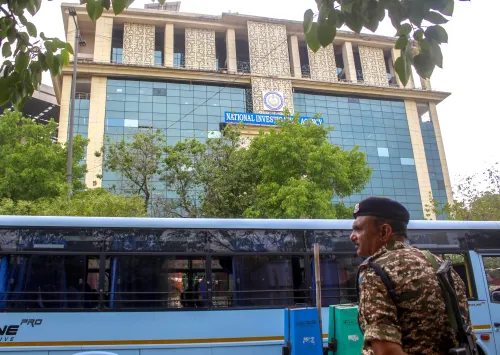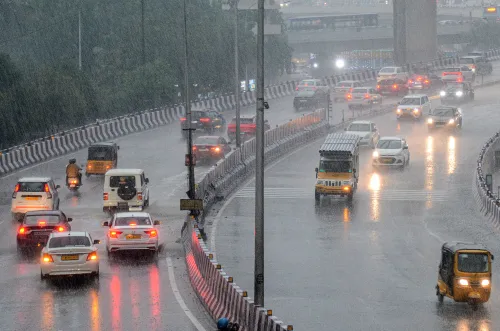Is the Monsoon Fully Active in Bihar? Heavy Rain Expected for Next 5 Days!

Synopsis
Key Takeaways
- Monsoon fully active in Bihar.
- Heavy rainfall expected for the next five days.
- Yellow alert issued for thunderstorms and strong winds.
- Residents urged to stay indoors and avoid riverbanks.
- Agricultural experts recommend protective measures for crops.
Patna, July 3 (NationPress) The monsoon has now become fully operational throughout Bihar, with the India Meteorological Department (IMD) predicting significant rainfall across all districts for the next five days.
A yellow alert has been issued, indicating the possibility of rain, thunderstorms, lightning strikes, and strong winds in various regions of the state.
As per the IMD, that heavy rain is anticipated in Katihar, Kaimur, and Rohtas on Thursday, while Gaya, Nawada, Sheikhpura, and other southern districts may experience intense rainfall in the following two days.
"The continuous cloud cover over Bihar is attributed to the flow of easterly winds from the Bay of Bengal and the activation of the monsoon trough extending from Sriganganagar to the east-central Bay of Bengal," stated an official from the Patna Meteorological Centre.
Thunderstorms with gusty winds are expected in several localities, and citizens have been urged to remain vigilant.
The Water Resources Department has issued warnings regarding rising water levels in multiple rivers, especially the Son River in Rohtas and the Gandak River in Gopalganj. Residents are advised against approaching riverbanks or bathing in the rivers.
To ensure safety, district administrations have prohibited boating, taking selfies, and recording videos near rivers during the monsoon season.
“We have recommended that individuals refrain from engaging in adventurous activities near rivers during this period,” remarked Saurav Kumar, SDRF Inspector, Gopalganj.
While there is currently no significant water flow from Nepal, officials have cautioned that heightened monsoon activity could lead to increased water levels in rivers such as the Gandak in northern Bihar.
The IMD has urged the public to stay indoors during heavy rains, thunderstorms, and lightning, and to avoid unnecessary travel. Residents are also advised to adhere to safety protocols recommended by local authorities.
The department has highlighted the risks of lightning strikes, strong winds, and potential damage to life and property.
While the anticipated rainfall is expected to provide much-needed relief from the heat, it could also result in waterlogging in low-lying regions and disrupt traffic.
Agricultural experts have encouraged farmers to implement protective measures for standing crops, keep an eye on forecasts, and utilize the rainfall for irrigation, while also preparing for possible flood-like conditions in susceptible areas.









